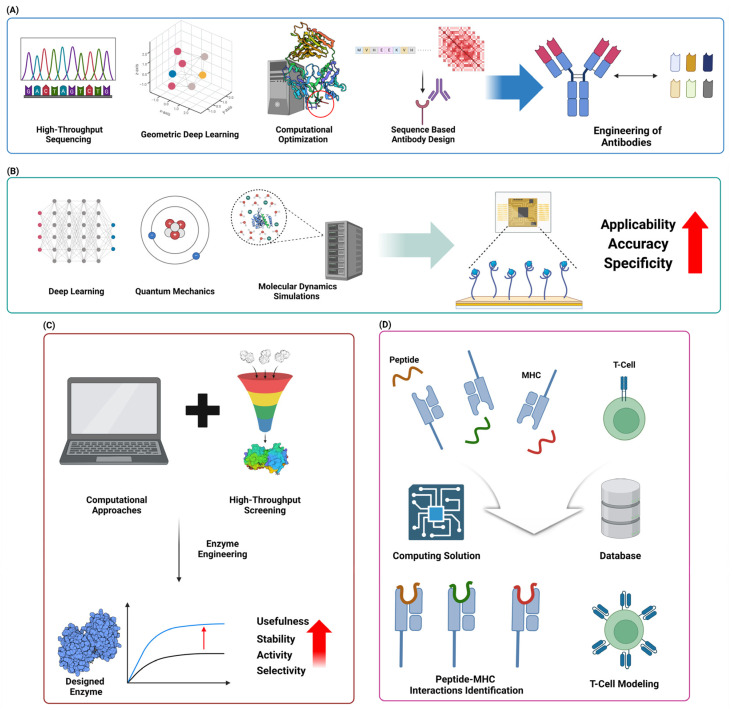Figure 6.
Protein engineering applications using computational approaches in biotechnology and pharmaceuticals. (A) High-throughput sequencing data and geometric deep learning can enhance antibody binding prediction capabilities. Computational technologies such as deep learning enable sequence-based antibody design, providing advanced approaches to antibody engineering. (B) Computational and structural methods, such as deep learning and quantum mechanical molecular dynamics simulations, have enabled the prediction of atomic-level movements of biomolecules, leading to improvements in the applicability, accuracy, and specificity of protein-based biosensors. (C) Advancements in computational technologies such as machine learning, combined with high-throughput screening, have enabled improved enzyme engineering with enhanced catalytic properties, leading to increased stability, activity, and selectivity of enzymes. (D) Computational technologies play a crucial role in therapeutic protein design, particularly in predicting peptide-MHC binding affinity. These methods not only advance personalized medicine but also accelerate the clinical application of protein therapeutics.

